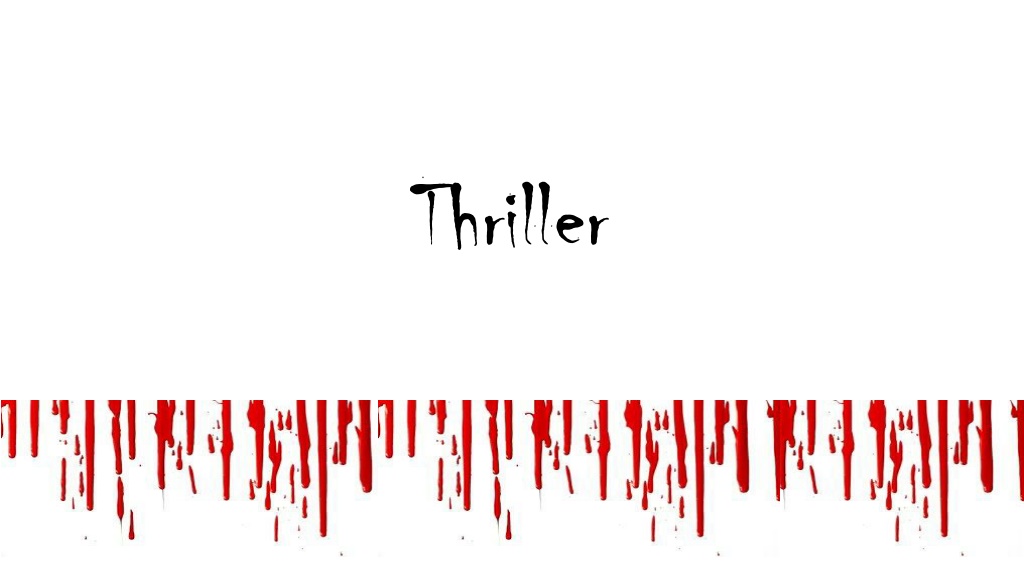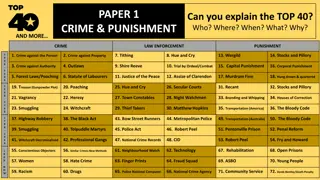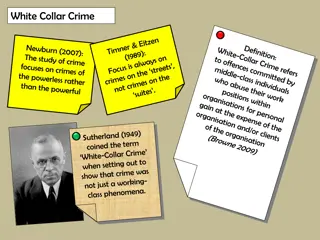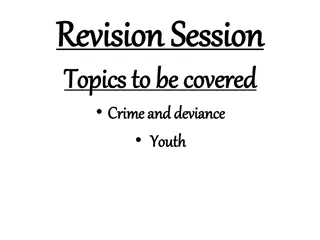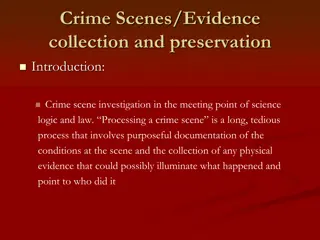Evolution of Thriller Genre: From Crime Retribution to Psychological Imbalance
The history of the thriller genre traces back to the 17th century with themes of crime retribution evolving into entertainment by the 19th century. Crime was viewed as a social problem in the late 20th century, leading to the emergence of detective and criminal noir styles. Psycho thriller narratives focus on the criminal's mind and psychological imbalance, generating suspenseful narratives. Characters in thrillers typically face daunting obstacles, and plots revolve around suspenseful contests against overwhelming odds, embodying admirable qualities like loyalty. Popular examples include "Don't Breathe," "Silence of the Lambs," "The Invisible Man," and Dan Brown's novels.
Download Presentation

Please find below an Image/Link to download the presentation.
The content on the website is provided AS IS for your information and personal use only. It may not be sold, licensed, or shared on other websites without obtaining consent from the author. Download presentation by click this link. If you encounter any issues during the download, it is possible that the publisher has removed the file from their server.
E N D
Presentation Transcript
History of Thriller Genre 17th century until late 18th century: Popular theme of crime stories: punishment of the criminal (Cawelti). Some critics like Cawelti (1976) and Worthington (1988) call this theme as crime retribution. Crime as moral and religious matter. 17-18th Century Early 19th Century: Cawelti (1976) states that in early nineteenth century, crime has changed from moral and religious matter into entertainment. 19th Century
Crime as social problem: Criminal acts were not evil deeds but the result of defective social arrangements and heredity (p. 56). Late 20th Century 1. Detective 2. Criminal Noir Style
Psycho Thriller Psycho thriller narrates crime as an outward manifestation of individual psychological imbalance. The narrative focus is criminal s mind This examination of the psyche becomes the component that generates the narrative in which structured based on principle of suspense. (Simpson, 2010)
Characters The protagonist must prove his/her worth by overcoming a series of obstacles, each one more daunting than the last, thus demonstrating the thriller s indebtedness to tales of heroic romance. The characters must be depicted as the one who has deviant mind with extreme violent and destructive actions as his or her outward manifestation The Criminal The Protagonist (Simpson, 2010) The criminals are often larger than life, imbued with a Gothic brand of pseudo - supernatural cunning and malice.
Plot The plot of a thriller is structured on the basic principle of suspense, or the heightened audience anxiety created when the protagonist is fighting a contest against what looks like overwhelming odds (Simpson 2010). The moral plane of the thriller is usually quite defined, with the individual hero embodying admirable qualities, such as loyalty. Examples of thriller genre: don t breath, silence of the lambs, the invisible man, Alex, Dan Brown s novels (Simpson, 2010)
